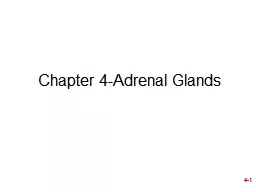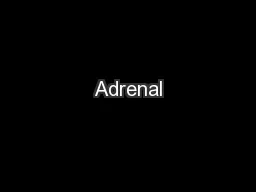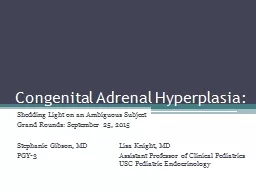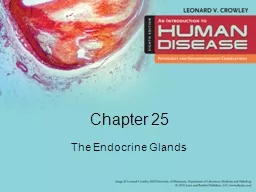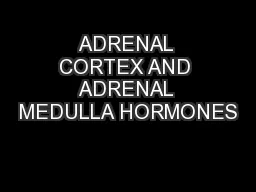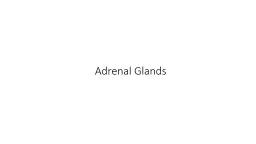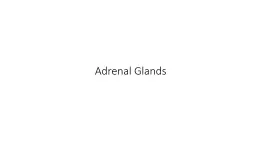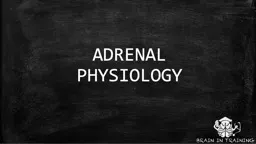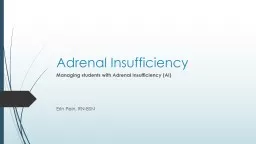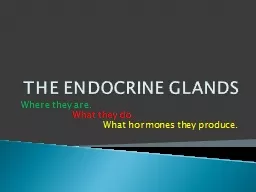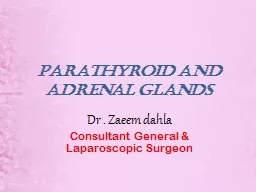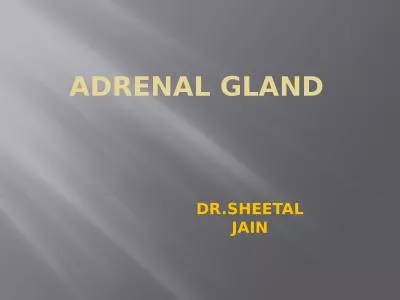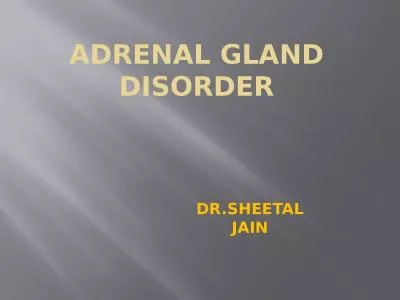PPT-Chapter 4-Adrenal Glands
Author : brooke | Published Date : 2022-05-18
4 1 Ch 4 Study Guide Critically read 1 pages pp 6169 before postsecretory metabolism of adrenal cortical hormones section 2 pp 7176 physiology of the mineralocorticoids
Presentation Embed Code
Download Presentation
Download Presentation The PPT/PDF document "Chapter 4-Adrenal Glands" is the property of its rightful owner. Permission is granted to download and print the materials on this website for personal, non-commercial use only, and to display it on your personal computer provided you do not modify the materials and that you retain all copyright notices contained in the materials. By downloading content from our website, you accept the terms of this agreement.
Chapter 4-Adrenal Glands: Transcript
Download Rules Of Document
"Chapter 4-Adrenal Glands"The content belongs to its owner. You may download and print it for personal use, without modification, and keep all copyright notices. By downloading, you agree to these terms.
Related Documents

